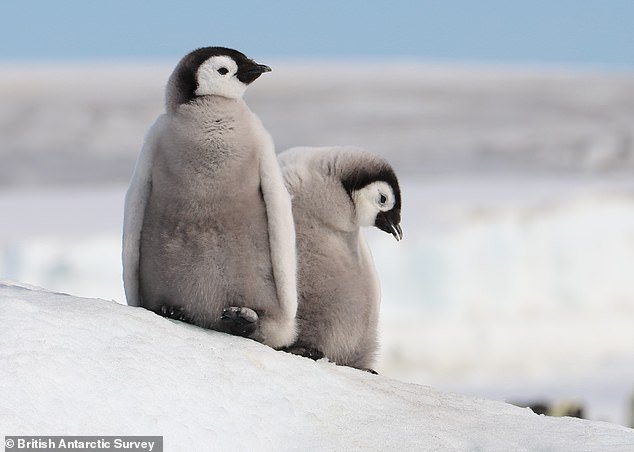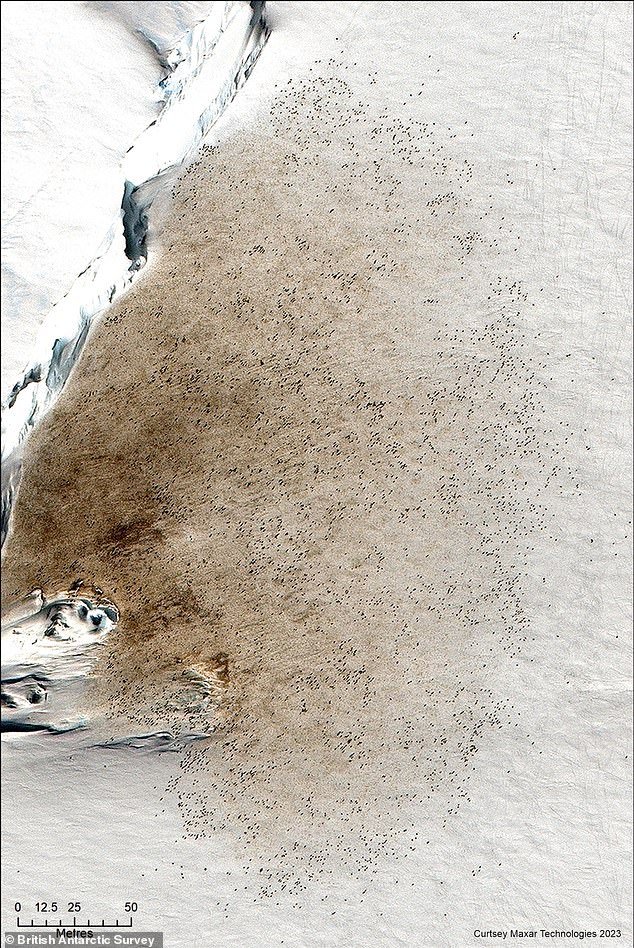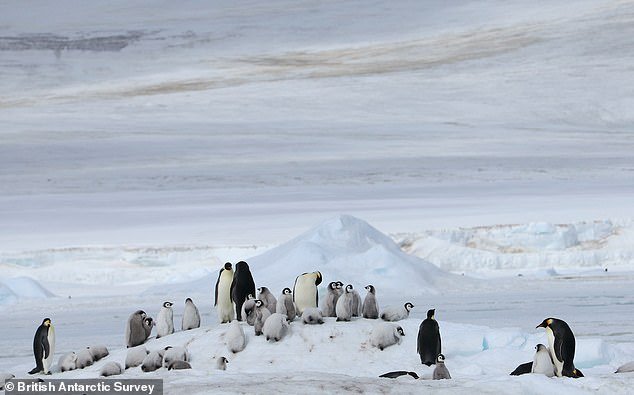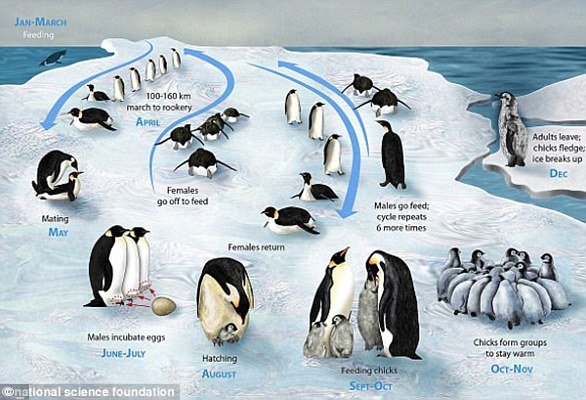Emperor penguins are on track to extinction: 99% of birds could be wiped out by 2100 if greenhouse gas emissions continue to rise at current levels, study warns
- Researchers analyzed the number of emperor penguins in 66 colonies
- Their analysis revealed breeding errors in 14 of the penguin colonies
They are some of the most majestic creatures on earth.
But emperor penguins are on their way to extinction, a new study warns.
Researchers from the British Antarctic Survey (BAS) have warned that 99 percent of birds could be wiped out by 2100 if greenhouse gas emissions continue to rise at current levels.
“As the continent warms, we see ice breaking out earlier, leading to higher chick mortality,” said Dr Peter Fretwell, Geographic Information Officer at BAS.
‘As fewer chicks survive in many colonies, it is likely that some current breeding sites will become unsustainable over time and the overall population will decline.’
They are some of the most majestic creatures on earth. But emperor penguins are on their way to extinction, a new study warns

Researchers from the British Antarctic Survey (BAS) have warned that 99 percent of birds could be wiped out by 2100 if greenhouse gas emissions continue to rise at current levels.
Emperor penguins breed and raise their chicks on land-fast sea ice: stable sea ice that is firmly attached to the coast.
If this ice breaks too early, the chicks will enter the sea before they have developed their waterproof feathers – also known as fledging.
This can lead to high, or in some cases, total chick mortality.
In their study, the researchers analyzed the number of emperor penguins in the remaining 66 colonies in Antarctica.
Their analysis found that record levels of Antarctic sea ice in late 2023 resulted in breeding failures in 14 of the colonies.
Worryingly, current predictions indicate that if greenhouse gas emissions continue to rise at current levels, the emperor penguin population will decline by 99 percent by the end of the century.

In their study, the researchers analyzed the number of emperor penguins in the remaining 66 colonies in Antarctica

While the 2023 numbers are concerning, they are actually slightly better than those of 2022. That year, 19 colonies (nearly 30 percent) were affected by low levels of sea ice.
While the 2023 numbers are concerning, they are actually slightly better than 2022.
That year, 19 colonies – almost 30 percent – were affected by low levels of sea ice.
Several colonies that were hit hard in 2022 also showed adaptations, with some seeking out more stable ice and others breeding on icebergs or ice shelves.
Dr. Fretwell explained: ‘The fact that we are seeing these adaptations in the hardest-hit colonies gives us some hope that the birds can respond to their changing environment and move to find more stable ice.
‘It also appears that overall sea ice concentration does not always translate into early rapid ice breakdown in the colonies, with more subtle regional factors, such as the persistence of the El Niño and La Niña cycles, also playing an important role to play.’
Over the past seven years, the extent of sea ice in spring and summer has declined sharply in all seasons around Antarctica.
The years 2022 and 2023 had record levels of low summer sea ice and represent the first in the satellite record (1979-2023) in which the area of Antarctic sea ice fell below 2 million square kilometers.
The news comes shortly after footage revealed the nail-biting moment hundreds of baby penguins jumped from a 15-metre high ice cliff in Antarctica.
A National Geographic film crew visited Atka Bay on the Ekstrom Ice Shelf and saw approximately 700 emperor penguin chicks gathering at the edge of a cliff.
To their surprise, the chicks began jumping from the top before landing in the icy ocean water below.
Fortunately, the chicks emerged from the stunt unscathed.
“This spectacular, heartbreaking moment has been seen by scientists before, but this is the first time this rare behavior has been filmed for television,” explains National Geographic.

